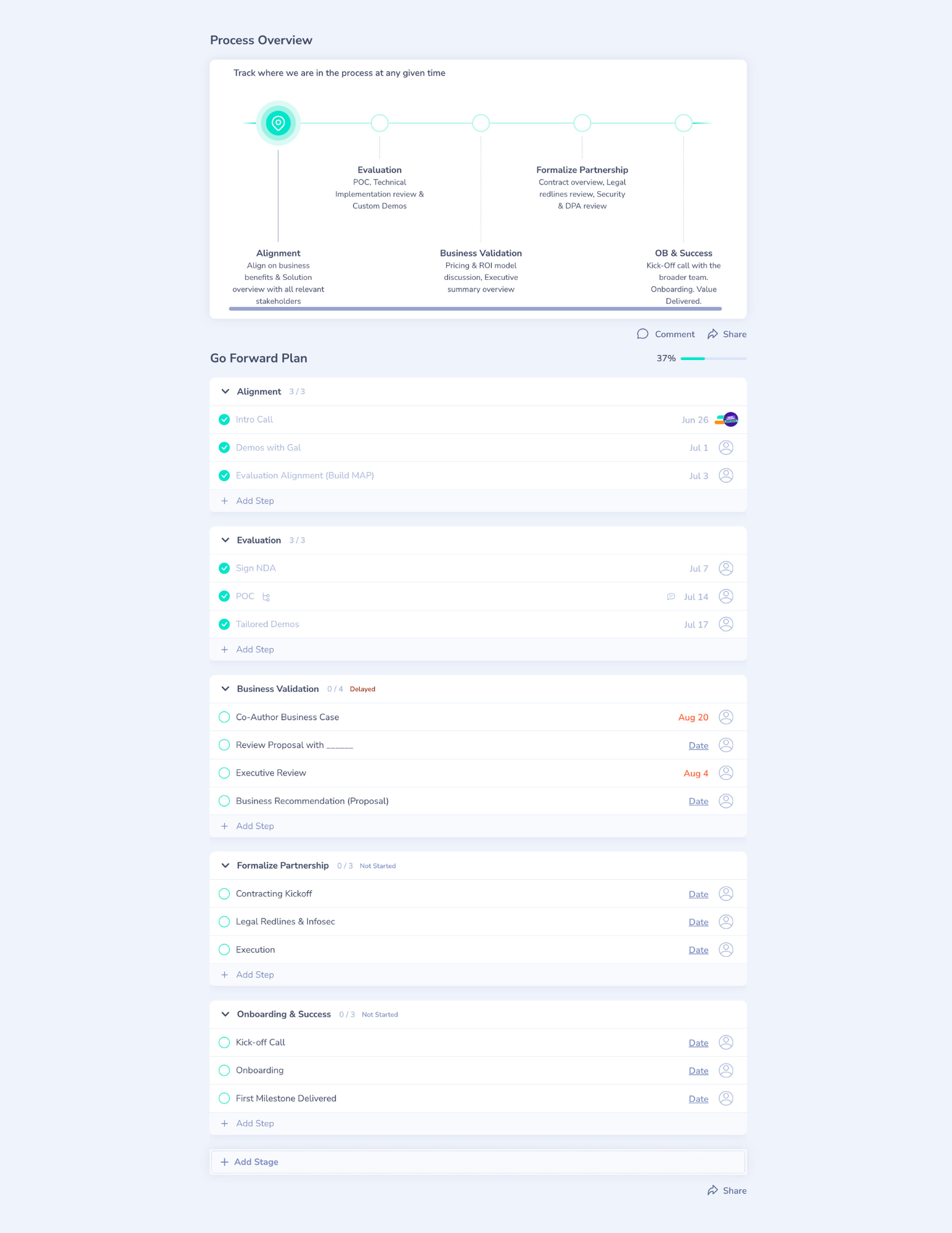

This is part two of our four-part series with Aligned on digital sales rooms, MAPs, onboarding, and forecasting. Each article stands on its own, so you can jump to whichever pain point you’re solving right now.
The road to inefficiency is paved with good intentions. Every ‘quick fix’—a new CRM field, a custom object, a shiny dashboard—starts out reasonably. Until it doesn’t. (Here’s looking at you, Feature Request object that even the product team never used.)
Some tools deserve a quick death. MAPs aren’t one of them. Done right, they make deals faster, forecasts sharper, and adoption smoother.
If you’re like most B2B GTM teams with a complex sales process, MAPs can help you maintain urgency, keep buyer committees coordinated, and streamline handoffs to customer success. When executed well, a MAP makes your seller look good, the buying process less overwhelming, your product adoption a sure thing, and sets more customers up to become brand evangelists.
The trick? Implement MAPs so sales instantly see the value—and don’t assume you’re just creating more busywork so an exec can have another dashboard they never check. (Ouch, but true.)
A Mutual Action Plan (MAP) is a living, collaborative roadmap that documents your customer’s goals, the milestones needed to get there, and who owns each step—on both sides. Call them mutual close plans, joint execution plans, or success plans—it’s the same shared project plan for a successful purchase process.
An effective MAP is built around one core principle:
Fake urgency doesn’t close deals. Buyers see through it.
Real urgency comes from their internal drivers, and the MAP should surface and reinforce those.
The MAP should capture:

Conveniently, those same points should guide your technical team’s approach—and now they’re written down in a MAP, not buried in email threads.
Once the central questions are answered, you can add other items that matter to both buyer and seller. Each point should capture:
MAPs connect the buyer’s urgent need with your process for delivering it. A digital MAP should also let both parties update and view progress in real time.
Click here to see an example of a Mutual Action Plan from our friends at Aligned.
MAPs aren’t just a “nice to have.” They deliver measurable results:
RevOps folks love data, but stats alone won’t win sales over. Change is hard, especially when paychecks rely on closing business.
We recommend selecting a few sellers who are most open to change to pilot your MAP build and work with you on refining it before rolling it out to the rest of the team. By the time you have the MAP where it needs to be to be widely launched, you have a few wins to celebrate with those early adopters ← and that will convince the rest of your team to get on board the MAP train.
For more on change management, check out this article for best practices.
Forecasts are only as good as the inputs—and gut feel isn’t a strategy. In Xactly’s 2024 Sales Forecasting Benchmark Report, just 20% of orgs hit forecasts within ±5% accuracy. MAPs give RevOps a clearer signal by showing who’s engaged, what milestones are complete, and where deals are at risk.
MAPs provide:
Salespeople can avoid or game pipeline hygiene. They can’t fake whether a buyer is actively participating in a MAP.
Want MAPs to work? Follow these rules:
And remember: the best MAPs are all about the buyer’s question, “How do I get this live and working to solve my problem fast?”
Mutual Action Plans aren’t busywork—they’re buyer alignment in action. They build trust, eliminate surprises, and turn forecasting from wishful thinking into predictable revenue. For RevOps leaders, MAPs are that rare tool that makes sales more effective and forecasts more reliable.
That’s not busy work for you or your sales reps. That’s business impact.
👉 Want to see how leading teams implement MAPs? Check out Aligned’s Mutual Action Plan resources and their Buyer Enablement Playbook for more details.
